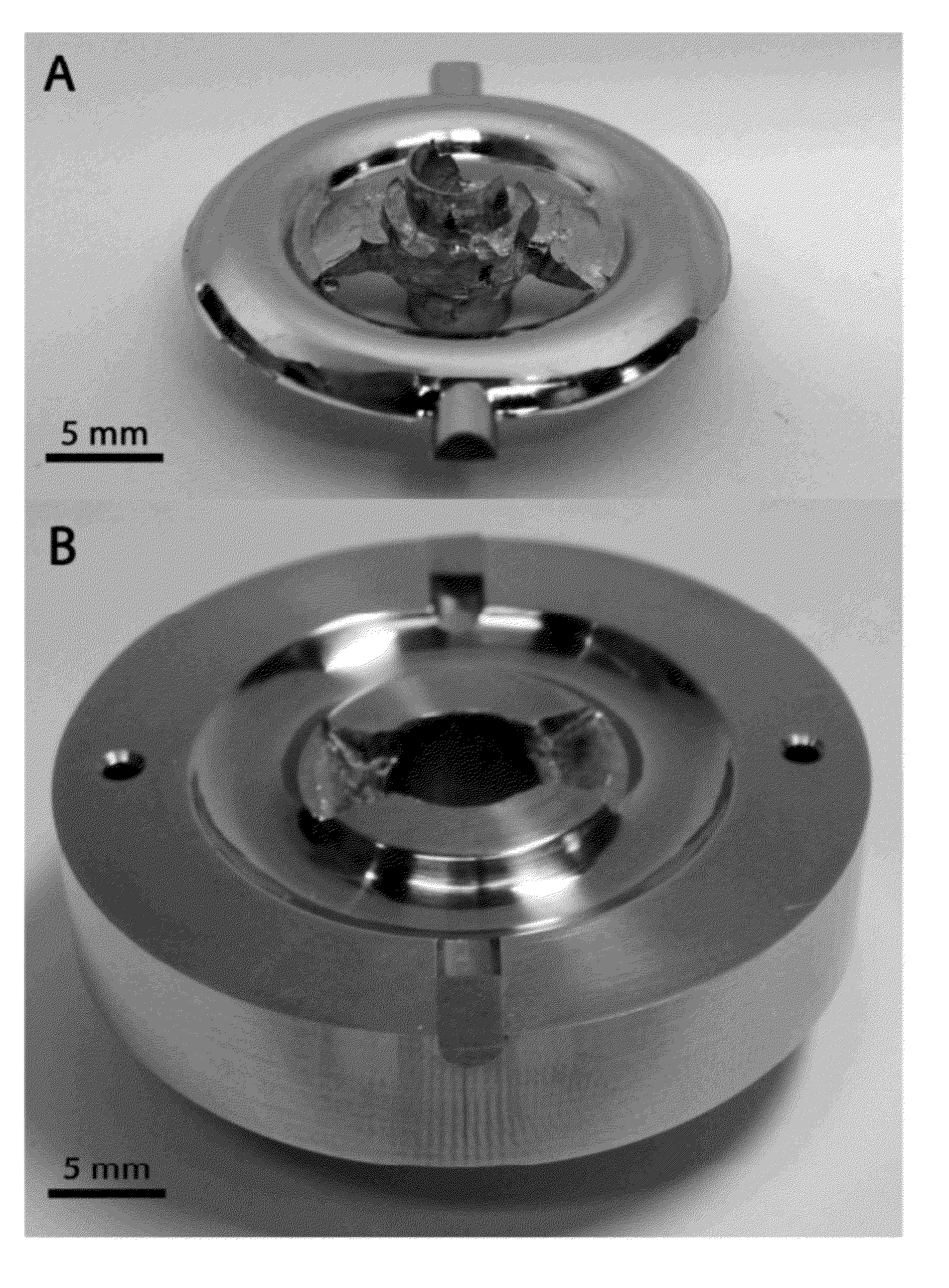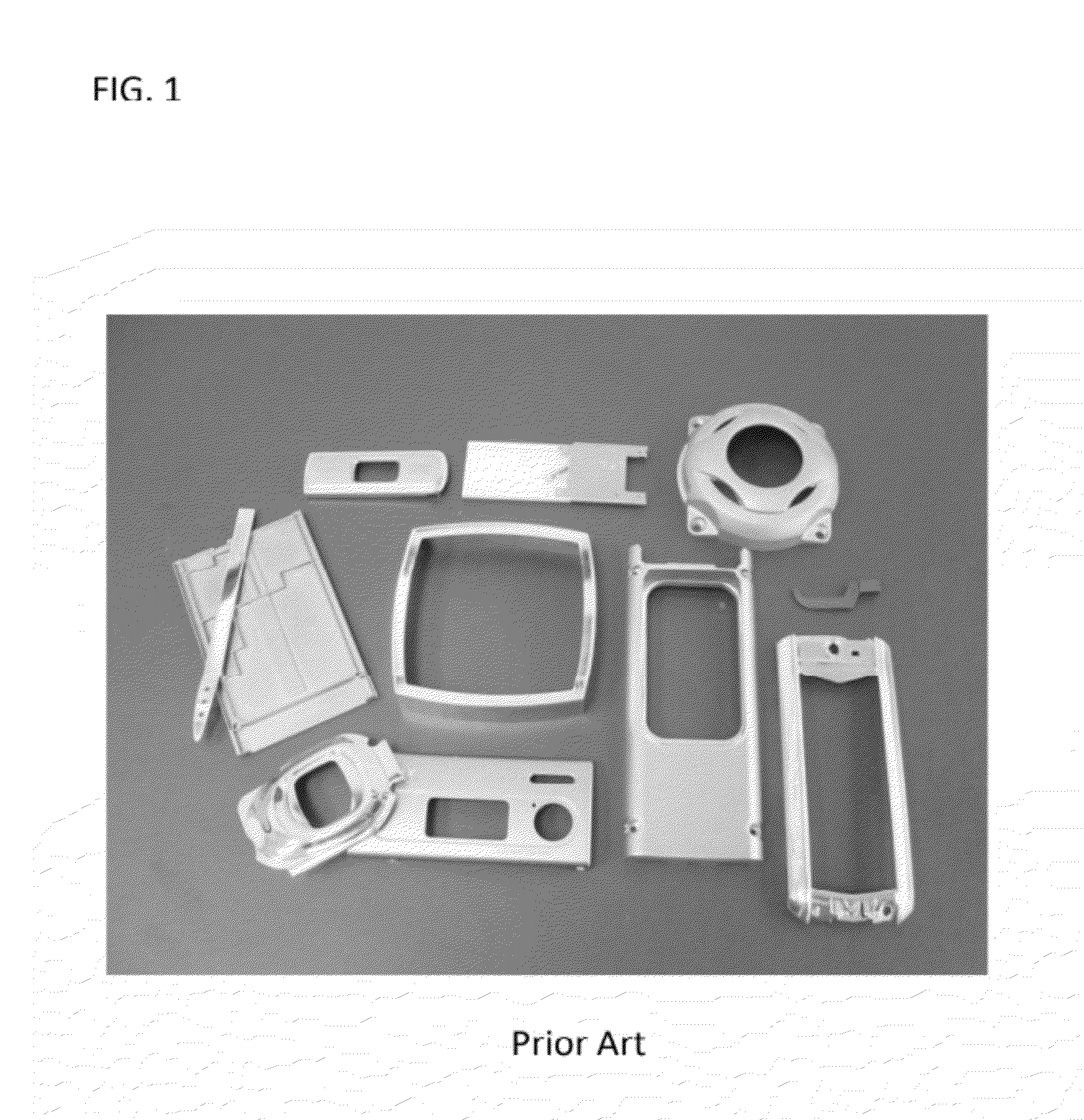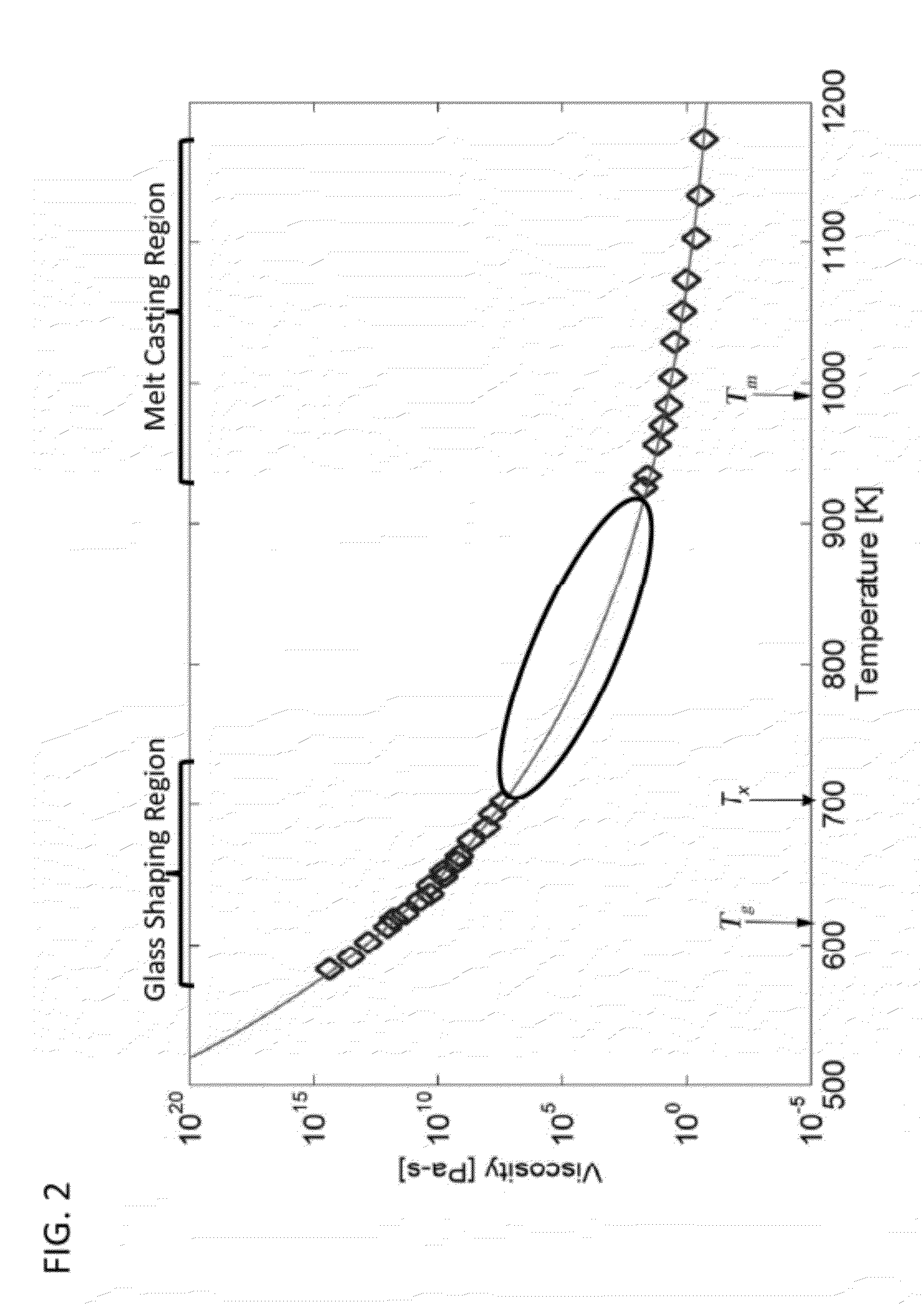High aspect ratio parts of bulk metallic glass and methods of manufacturing thereof
a technology of bulk metallic glass and parts, applied in the field of parts made from bulk metallic glass having high aspect ratio, can solve the problems of low strength and hardness, limited toughness and damage tolerance, and high demands placed on material performance and fabrication capability, and achieve the effect of high aspect ratio and free of defects
- Summary
- Abstract
- Description
- Claims
- Application Information
AI Technical Summary
Benefits of technology
Problems solved by technology
Method used
Image
Examples
example 1
Exemplary RDF High-Aspect Article Forming with Pd-Based BMG
[0120]As an example of a bulk high aspect ratio BMG structural component fabricated by the RDHF method, FIG. 14A shows a semi-torroidal net shaped component fabricated using the RDHF injection-molding method described above. FIG. 14B shows the mold-tool used to fabricate the part. The component was removed from the mold-tool with no subsequent finishing required. The precision net shape, high quality surface finish, and detail in the part are evident.
[0121]The part was produced from a Pd-based (Pd43Ni10Cu27P20) BMG with high Young's modulus (˜100 GPa), high yield strength (1.6 GPa), high hardness (500 Kg / mm2, Vicker's Hardness), by RDHF injection molding at a process temperature of about 450° C., process pressure of about 20 MPa, and total processing time (heating time of the initial rod-shaped BMG charge plus shaping time to obtain the net-shaped component) of about 50 milliseconds.
example 2
Exemplary RDF High-Aspect Article Forming with Zr-Based BMG
[0122]As another example of a bulk high aspect ratio BMG structural component fabricated by the RDHF method, FIG. 1 shows a semi-torroidal net shaped component fabricated using the RDHF injection-molding method described above. The components are produced from a Zr-based (Vitreloy-105, Zr52.5Cu17.9Ni14.6Ti5Al10) BMG at a process temperature of about 550° C., process pressure of about 20 MPa, and total processing time (heating time of the initial rod-shaped BMG charge plus shaping time to obtain the net-shaped component) of about 50 milliseconds. Aside from a few mild oxidation spots evident on the surface, a consequence of processing this part in open air, the part generally demonstrates precision net shape, high quality surface finish, and detailed features.
[0123]The Vitreloy 105 BMG has a melting temperature Tm of about 820° C., and ΔT of about 50° C. If the part shown in FIG. 15 was to be produced by a conventional die ca...
PUM
| Property | Measurement | Unit |
|---|---|---|
| viscosity | aaaaa | aaaaa |
| viscosity | aaaaa | aaaaa |
| processing temperature | aaaaa | aaaaa |
Abstract
Description
Claims
Application Information
 Login to View More
Login to View More - R&D
- Intellectual Property
- Life Sciences
- Materials
- Tech Scout
- Unparalleled Data Quality
- Higher Quality Content
- 60% Fewer Hallucinations
Browse by: Latest US Patents, China's latest patents, Technical Efficacy Thesaurus, Application Domain, Technology Topic, Popular Technical Reports.
© 2025 PatSnap. All rights reserved.Legal|Privacy policy|Modern Slavery Act Transparency Statement|Sitemap|About US| Contact US: help@patsnap.com



